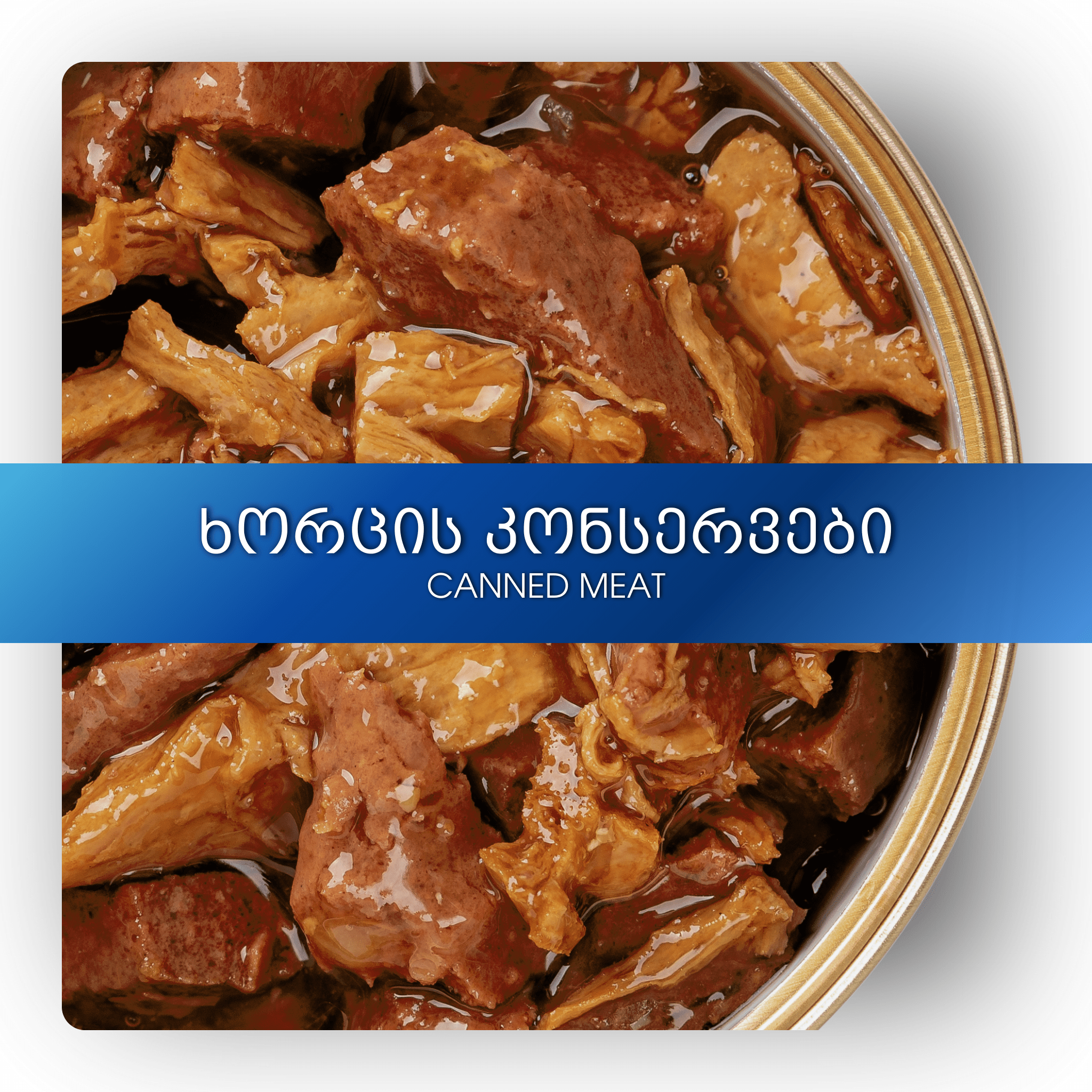Canned Meat
Canned foods are food products that are placed in metal, glass or polymer containers, hermetically sealed and pasteurized or sterilized in a hot environment. Canning is important because of ease of transportation, convenience of consumption, and extension of shelf life.
Canned meat and meat products are distinguished according to the type of raw materials, manufacturing method, heat treatment mode and other indicators:
◾️ According to the type of main raw material, they distinguish between: beef, pork, lamb, poultry, etc., as well as canned goods containing meat and meat-vegetable mixture;
◾️ Taking into account the way raw materials are processed before canning, canned goods are divided into: canned goods that differ in the nature of salting, the degree of shredding of meat and the mode of its heat treatment;
◾️ According to the composition, they distinguish: preserves made in their own juice, sauce or jelly and with a garnish;
◾️ Canned foods are divided according to purpose: breakfast, first and second course meals, children's and diet food canned goods;
◾️ According to the method of preparation before use, preserves are distinguished, which do not need to be heated before serving, and which must be heated before serving;
◾️ according to the duration of storage, short-term (up to 1 year) and long-term (3-5 years) storage cans are distinguished;
◾️ According to the mode of heat treatment and, therefore, the stability to storage, pasteurized (so-called semi-canned), low-temperature sterilized and high-temperature sterilized canned goods are distinguished.
Raw materials: raw materials for canning are divided into basic, auxiliary and flavoring groups; The main ones include meat of all kinds of animals and birds, food by-products, blood, protein preparations, melted fat, milk and its products, eggs. Additional raw materials are cereals, legumes, vegetables, flour, starch, vegetable fats. Raw materials that give taste are table salt and spices.
Packaging material: The shelf life and safety of the contents of the can depends on the reliability of the tare. Metal (tin), polymer material and glass containers are used in canning production.
Canned meat is prepared in cans of different capacities and shapes: children's and dietary food cans are preferred in metal cans of 200 ml capacity, meat-vegetable cans of glass - 500 and 1000 ml, and other meat cans in metal cans of 350 and 500 ml capacity. Metal cans are predominantly cylindrical in shape, rarely shaped (oval, elliptical, square).
Technological schemes: the technological scheme provides for the performance of inspection, preparatory and basic operations.
◾️ Inspection operations include: selection-inspection and suitability check of main, auxiliary and flavored raw lemons, as well as containers;
◾️ Preparation operations include meat softening, draining, sorting, cutting/grinding, pre-heat treatment, salting, etc.;
◾️ The main operations are packaging, canning, heat treatment, inspection and sorting.
Packaging: the raw materials defined by the recipe are placed in the jar in the following order: first, solid ingredients, table salt, spices, raw fat, meat, etc. are placed, and then it is filled with liquid components, broth, sauce or jelly-forming mass.
Sealing: the filled cans are sealed on the principle of cold rolling on semi-automatic or automatic machines. During automatic capping, a vacuum is created at the neck of the can, which ensures that residual air is pumped out.
Pasteurization/Sterilization: It is necessary to inhibit the animal activity of residual microflora in the can, to inactivate meat enzymes and to thermally treat the product itself to the proper condition.
Closed jars are sterilized in an autoclave or in continuous-flow sterilizers. When heated, pressure is created inside the closed jar, which prevents the jars from swelling, deformation or lids (in glass jars). After the end of sterilization, canned food is sorted first into hot and then into cold.
Requirements for finished products: the quality of canned goods is assessed by the composition of the contents, quality and conformity to the assortment, as well as the state of the packaging. Pay attention to the following points: the meat should not be coarse, dry or overcooked. The presence of bone fragments, cartilage, tendons, ligaments and inclusions of large blood vessels is not allowed. The components provided by the recipe should retain their original shape and should be evenly distributed throughout the volume.
